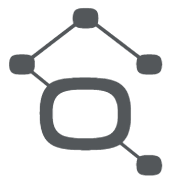"Never innovate to compete, innovate to change the rules of the game."
-David O. Adeife
There is a great mystery surrounding the subject of network management (NM). No one can define exactly what NM is or what it should do for them, but everyone knows they need it. In a real sense, NM has become to mean both everything and nothing and is typically defined in short phrases like, "It needs to have remote access.", or, "It needs to watch all this equipment." People have an idea of what it should do, but no real sense of how it should do it.
Vaonet has taken the time to understand directly from you, the technician's perspective, what exactly is needed to best manage a network. You want to know the secret? The solution is quite simple. Vaonet provides a solution that sits quietly in the network, monitors anything you want it to, and does so affordably, reliably, and unobtrusively. The IMPRS™ System is an effective tool in your hand. It quickly allows you to get to the root cause of an issue, fix it, and move on to something else. Whereas most other NM solutions just add to the day-to-day problems of the technician, the IMPRS™ System becomes an integral part of your forward progress. It's something you can take for granted will be there ready to facilitate quick and easy resolution to issues in the network.
IMPRS Portal™
Solving the daunting problem of managing networks has always been an afterthought when it comes to designing, deploying, maintaining, and expanding them. Why is that? Maybe it’s because network management is considered a “necessary evil”.
Portico Express™
As the industry shifts from traditional switching platforms with integrated external alarm management to IP-centric switching platforms, companies are looking for a product that will handle remote building alarm management. The Portico Express™ has quickly become the obvious choice.
Proteus™
When it comes to remote cabinet management, our customers have voiced several primary concerns: battery dissipation during power outages, battery tray temperatures, and the inability to retire older outdated equipment currently used for alarming.




